what happens to aneurysm after coiling
An aneurysm coil is a device inserted via catheter to fill in a brain aneurysm a bulge in a blood vessel. The long-term success of endovascular coiling to treat aneurysms is about 80 to 85.

Endovascular Coiling An Overview Sciencedirect Topics
Endovascular coiling is a minimally invasive technique which means an incision in the skull is not required to treat the brain aneurysm.

. Once all the coils are placed they compact to form a tiny metal ball that blocks blood from flowing from the main. The coil is left in place in the aneurysm. An aneurysm is a weak.
You will need to lie flat and keep your leg or arm still and straight for 4 to 6 hours. The neurovascular surgeon makes a puncture in. Pain medication is given.
A coil can stop a ruptured aneurysm from continuing to bleed or prevent an unruptured. An aneurysm coiling procedure is performed by neurosurgeons with the support of a team of nurses and imaging specialists. In the 1990s coiling was introduced as a way of treating ruptured and unruptured brain aneurysms without the need for a craniotomy an operation that opens the skull to expose the.
Aneurysms can be treated by coiling even after a rupture. It is considered less invasive surgery in which a small incision is made in the groin so. Aneurysm coiling is a procedure that prevents aneurysms from leaking or rupturing.
An aneurysm is a weakened area in the wall of an artery. Brain aneurysms can be treated using surgery if they have burst ruptured or theres a risk that they will burst. You are transferred to the intensive care unit ICU for observation and monitoring as the anesthesia or sedation wears off.
Recurrence happens if coils. Rather a catheter is used to reach the aneurysm in the. Coils are inserted one at a time until the aneurysm is filled.
They are responsible for real-time monitoring of. After a ruptured aneurysm recovery from a coiling procedure typically involves a hospital stay of 14 to 21 days or longer depending on issues caused by the rupture and any. What happens after the procedure.
This includes whether or not the aneurysm has ruptured and the patients overall health. The resulting aneurysm can swell and rupture causing damage to surrounding brain tissues and possibly death. Recovery time after brain aneurysm coiling depends on a number of things.
Brain aneurysms are a problem with the arteries which transmit blood under pressure pumped by the heart. Once the aneurysm has been sealed off the catheter will be removed. Moving too soon after the procedure may cause bleeding at the puncture site.
Healthcare providers use endovascular coiling also called endovascular embolization to block blood flow into an aneurysm. You may need to stay in the hospital for a month or more to recover. Veins on the other hand transmit blood under very low pressure after it passes.
It can happen to any artery. After the insertion site stops bleeding a dressing will be applied. Endovascular coiling is a way to treat aneurysms without opening the skull or performing brain.
There were more rebleeds from the treated aneurysm in the coiling group than in the clipping group but there was no difference between the groups in the number of deaths. What happens during recovery will depend on how. Coiling is a minimally invasive procedure that uses tiny catheters to insert small coils directly into the aneurysm and fill it from inside the vessel.
Your aneurysm may be repaired with clipping or coiling. Endovascular coiling is a way to treat aneurysms without opening the skull or performing brain surgery. You may feel tired for up to 12 or more weeks.
The coil refers to a thin wire which is bunched up coiled within the. What is Brain Aneurysm Coiling. Preventative surgery is usually only.
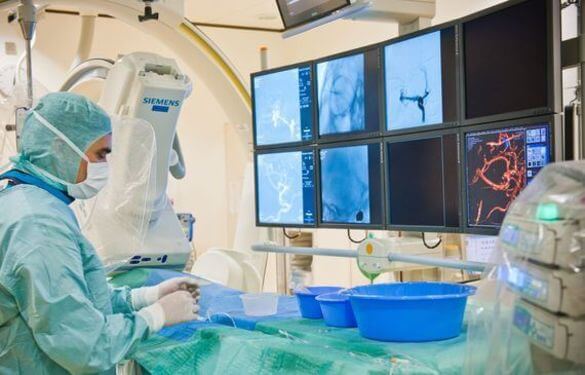
Coiling Therapy Of Brain Aneurysms Heidelberg University Hospital
Oc Finally Heading Home Today After A Successful Brain Aneurysm Coiling Surgery R Pics
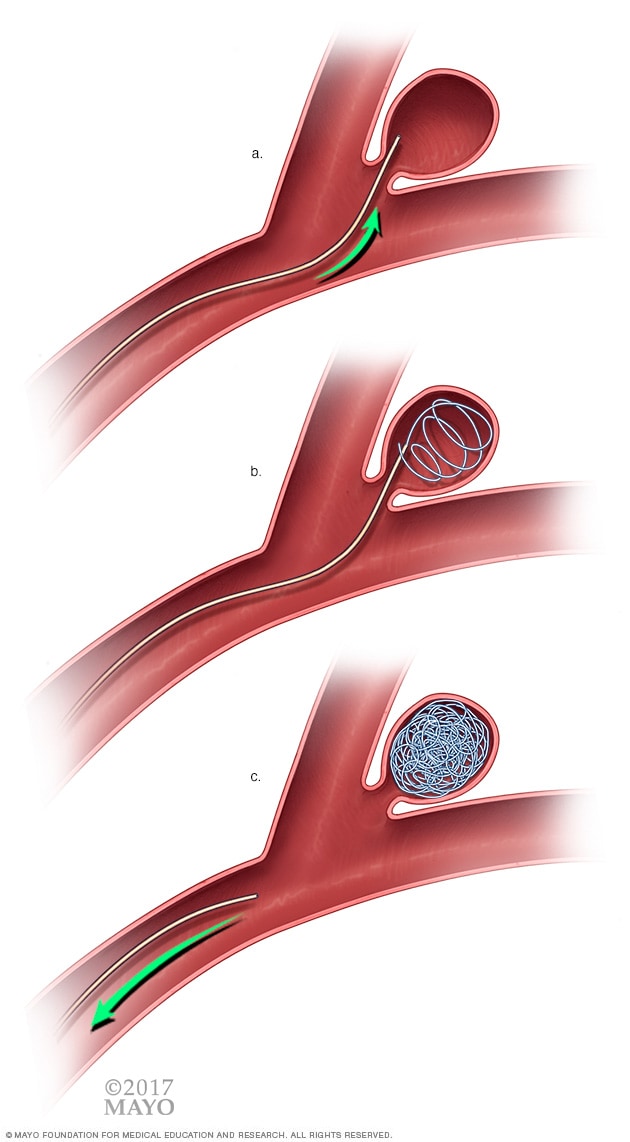
Endovascular Coiling Mayo Clinic

Cerebral Aneurysm Symptoms Diagnosis And Treatments

Aneurysm Coiling Procedure Risks What Are They

Imaging Follow Up Of Intracranial Aneurysms Treated By Endovascular Means Stroke

Fda Cautions About Risks Of Coiling For Brain Aneurysms Medpage Today

Endovascular Coiling Johns Hopkins Medicine

Recommendations For The Endovascular Treatment Of Intracranial Aneurysms Stroke
Endovascular Treatment Of Large And Giant Aneurysms American Journal Of Neuroradiology

Aneurysm Coiling Specialist Pomona Ca Arcadia Ca Inland Neurosurgery Institute Ini Neurological Surgery

Findings Of Brain And Spinal Mri And Angiography After The First Download Scientific Diagram

Microsurgical Clipping And Endovascular Coiling For Brain Aneurysm Johns Hopkins Medicine

Brain Spine Foundation Coiling Of Brain Aneurysms
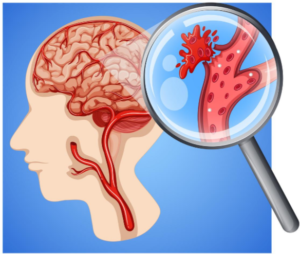
Exercise Guidelines After Brain Aneurysm Coiling Or Clipping Scary Symptoms
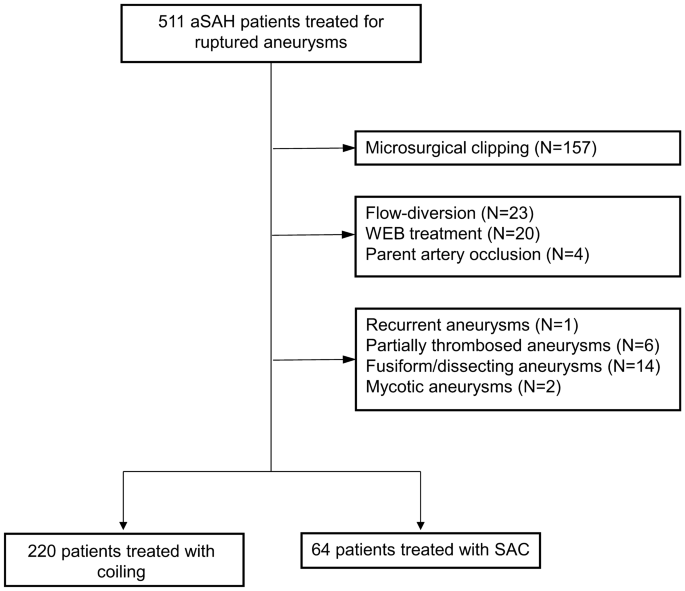
Propensity Score Adjusted Analysis On Stent Assisted Coiling Versus Coiling Alone For Ruptured Intracranial Aneurysms Scientific Reports
/brain-aneurysm-surgery-the-day-of-surgery-5083419_final-be086883642440589b321d6c012c5a0b.jpg)
Brain Aneurysm Surgery The Day Of Surgery

Brain Cerebral Aneurysm Coiling Treatment Hospital In Delhi India

Long Term Recurrent Subarachnoid Hemorrhage After Adequate Coiling Versus Clipping Of Ruptured Intracranial Aneurysms Stroke